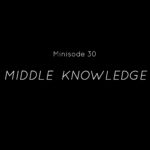W. Robert Godfrey, President and Professor of Church History at Westminster Seminary California, has reviewed Keith D. Stanglin and Thomas H. McCall, Jacob Arminius: Theologian of Grace (Oxford: Oxford University Press, 2012). In his review, Godfrey takes issue with Stanglin and McCall’s insistence that Arminius was not Semi-Pelagian. He writes,
Stanglin and McCall have a prolonged discussion as to whether Arminius’s teaching of conditional predestination is semi-Pelagian (pp. 158-64). The discussion is rather confusing. On the one hand they object strenuously to anyone calling Arminius semi-Pelagian because they want to stress his theology is so much a theology of grace. On the other hand they acknowledge that Arminius clearly teaches that after the initial sovereign work of grace, those regenerated by grace can resist and reject it. They also acknowledge that a number of historians have called such a notion of the resistibility of grace semi-Pelagian. They acknowledge that ultimately the question can only be answered on the basis of how one defines semi-Pelagianism. Certainly in the history of doctrine, the term has been used to describe positions from those near to Pelagius to those near to Augustine. Arminius is semi-Pelagian, but towards the Augustinian end of that spectrum.
But this sets up something of an arbitrary standard for defining Semi-Pelagianism, basing it merely on some in the history of doctrine using the term in a particular way. A better course in this instance would be to go to the historic sources that define the term as well as the standard definition of the term in historical theology. Just because some Calvinistic theologians label anything short of the Calvinist view as Pelagian or Semi-Pelagian does not make it the appropriate use of the terms. Anyone can define other views into heresy by manipulating labels for heretical views.
So, to counter Godfrey’s error here, take note of these resources (only some of the releavnt material on this question on our site):
Dan Chapa’s “Are Arminians Semi-Pelagian?” goes back to the classic and standard source for defining Semi-Pelagianism, the Canons of Orange, and shows that Arminius and Arminianism are neither Pelagian nor Semi-Pelagian, refuting the arguments of J. I. Packer. This is definitive via primary source-work.
Roger Olson’s “R. C. Sproul, Arminianism, and Semi-Pelagianism,” attends to what the standard definition of Semi-Pelagianism is in historical theology, chiding R. C. Sproul for his mislabeling of Arminianism as Semi-Pelagian.
Dan Chapa’s “Prevenient Grace and Semi-Pelagianism” responds to a nuanced attempt to argue that Arminian theology is Semi-Pelagian and actually shows that Calvinism is closer to Semi-Pelagianism than Arminianism! Dan also argues that latter case, adding more detail, in his “Calvinism’s Problems with Total Depravity.”
John M. Wiley, “Distinguishing Classical Arminianism from Semi-Pelagianism: An Attempt to Liberate Jacobus Arminius from Fallacious Claims and Popular Misconceptions about His Theology” — a graduate paper written by a modified Calvinist for coursework at Piedmont International University; the title sums it up well.
More articles could be mentioned here, but what is listed here is already more than enough to show Godfrey’s labeling of Arminius as Semi-Pelagian to be in error and his criticism of Stanglin and McCall on that point unjustified.





